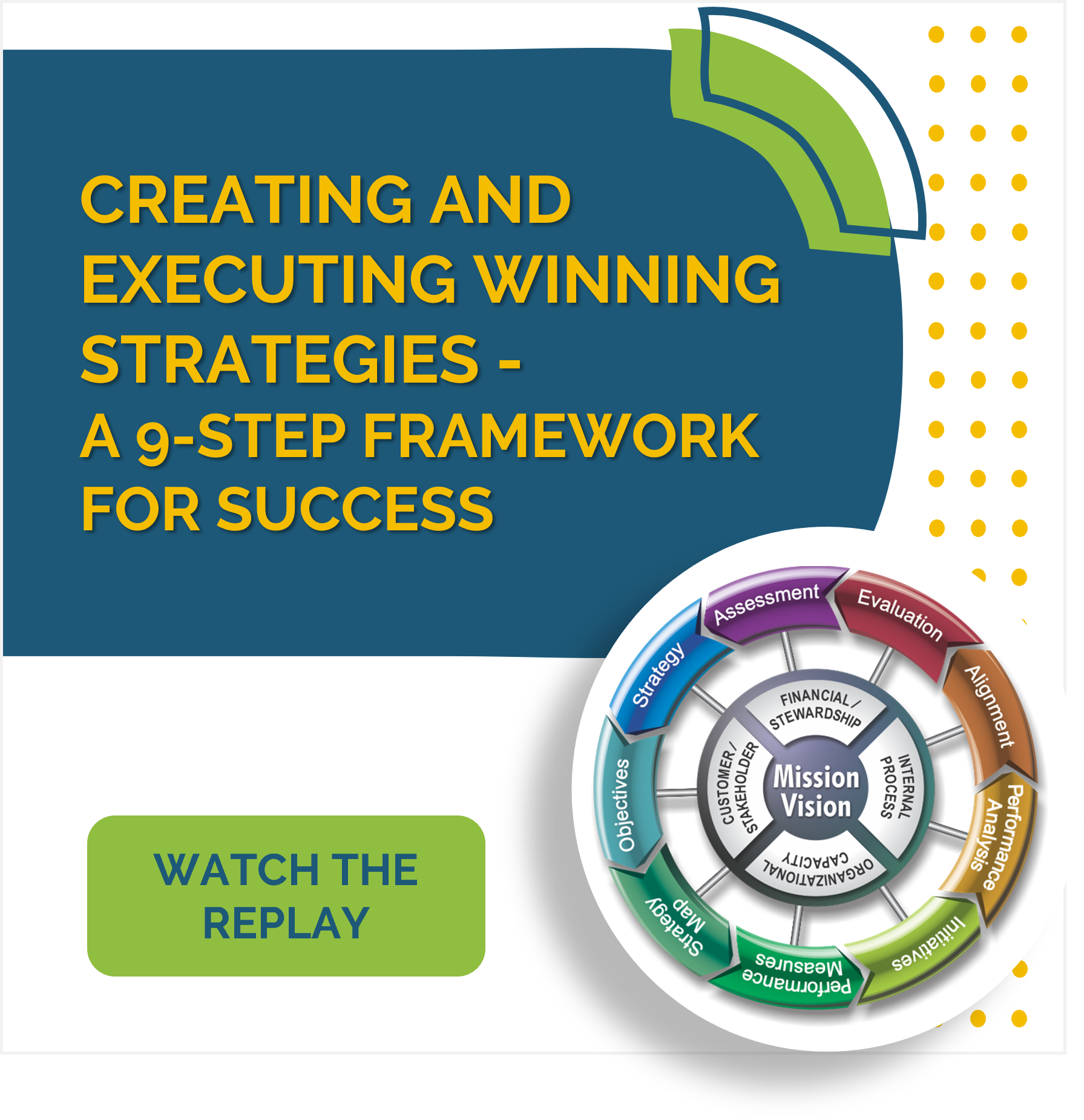
How to Create a Balanced Scorecard: Nine Steps to SuccessTM
For More Information
How to Create a Balanced Scorecard: Nine Steps to SuccessTM
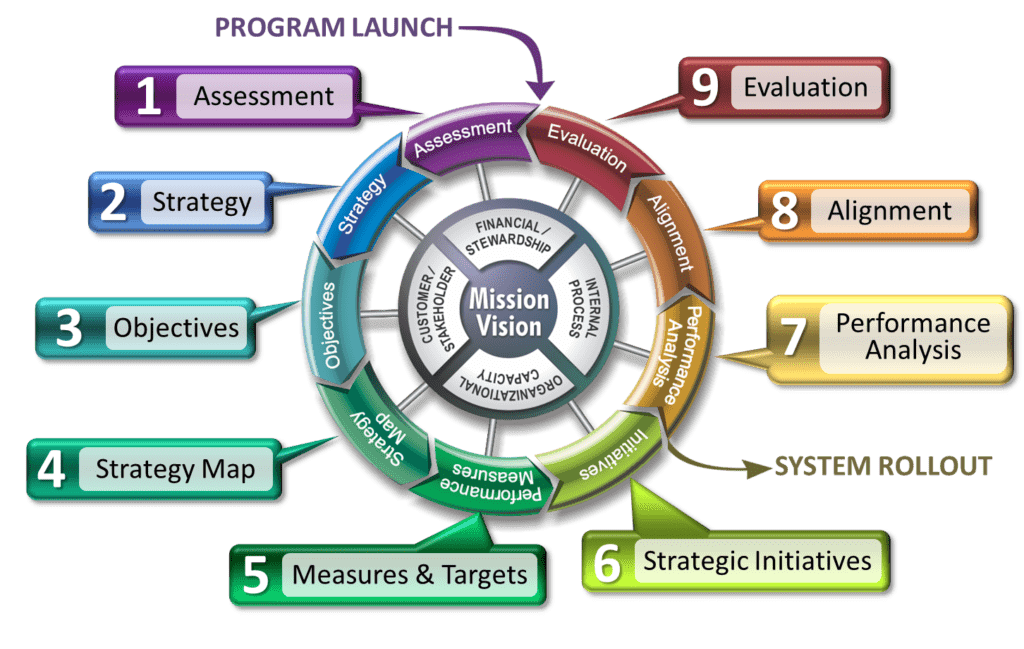
The Nine Steps to Success™ is a structured framework developed by Balanced Scorecard Institute (BSI) to help organizations implement and sustain a Balanced Scorecard (BSC) system effectively. This methodology, refined through years of experience across various industries, ensures that strategic planning translates into measurable results.
Why Choose the Nine Steps to Success™?
Many organizations struggle with strategy execution due to misalignment, unclear objectives, and ineffective performance measurement. The Nine Steps to Success™ provides a practical, step-by-step approach to overcoming these challenges, helping businesses, nonprofits, and government agencies achieve long-term success.
The Nine Steps to Success™ Explained
Below details each step of the Nine Steps to Success™ framework.
Program Launch
The program is launched by project champion(s) and key stakeholders (working on their own or with BSI consultants). Existing strategic material and results are examined, a strategic gap analysis is completed, key stakeholders are interviewed, and other assessment activities are completed to customize workshops to incorporate work done to date.
1: Assessment
We begin by evaluating the organization’s current strategy, challenges, environment, and systems to identify gaps and opportunities for improvement..
2: Strategy
A well-defined strategy is crucial for success. The strategy development step focuses on clarifying mission, vision, values, and strategic goals (themes) to set the foundation for the strategic management system.
3: Strategic Objectives
We establish clear, actionable objectives linked to the organization’s mission. These objectives are organized into four Balanced Scorecard perspectives (which vary slightly depending on the organization/sector):
- Financial (e.g., profitability, cost management)
- Customer (e.g., satisfaction, stakeholder value)
- Internal Processes (e.g., efficiency, innovation)
- Organizational Capacity or Learning & Growth (e.g., employee skills, culture).
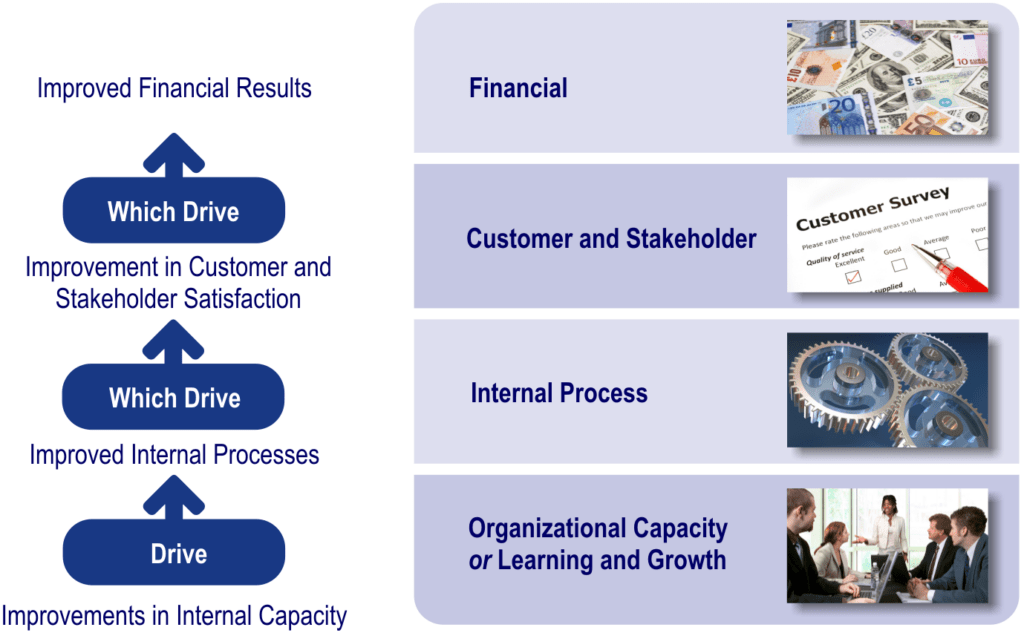
4: Strategy Mapping
A Strategy Map visually connects objectives to show cause-and-effect relationships, ensuring alignment between different areas of the organization..
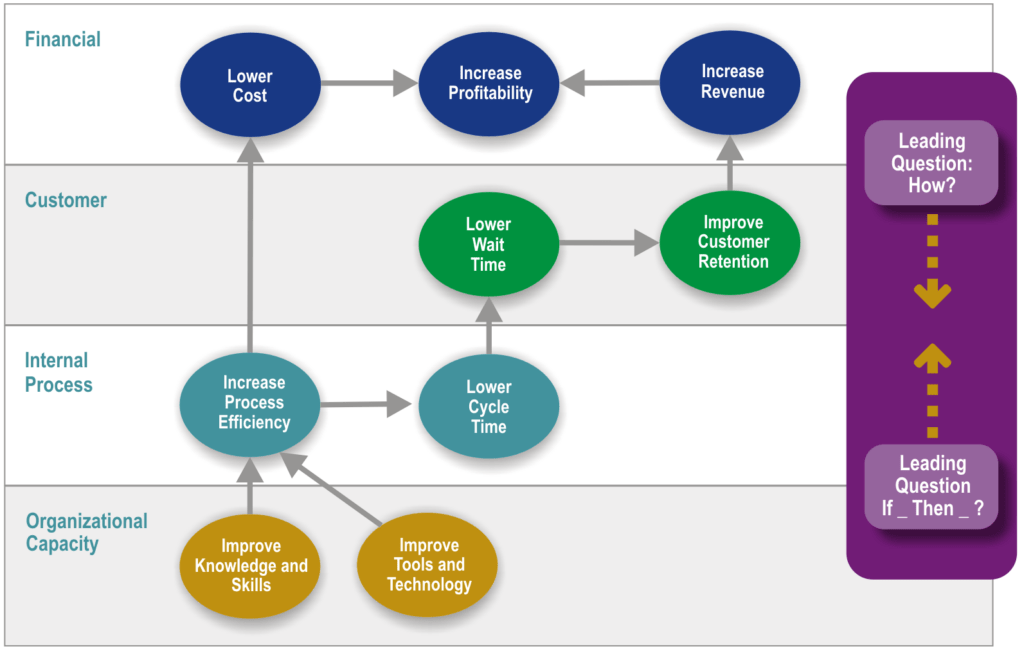
5: Performance Measures
We define Performance Measures (or Key Performance Indicators (KPIs)) to track progress toward strategic objectives. These measures help teams stay focused on what matters most.
6: Strategic Initiatives
Strategic objectives require action. This step involves identifying and prioritizing initiatives and projects that drive results and allocating resources effectively.
Scorecard Rollout: Integrating Steps 1 through 6
Once Step 6 is complete, the organization-level scorecard system is ready to be rolled out to employees. The goal of this part of the process is to create more internal fans and build a coalition of employees to start thinking more strategically and using the system to better inform decision making. The Balanced Scorecard Graphic, shown below, is a key deliverable and brings all the strategic elements of strategy formulation and planning together in one simple to understand graphic that becomes the heart of the process of communicating the organization’s strategy to all employees.
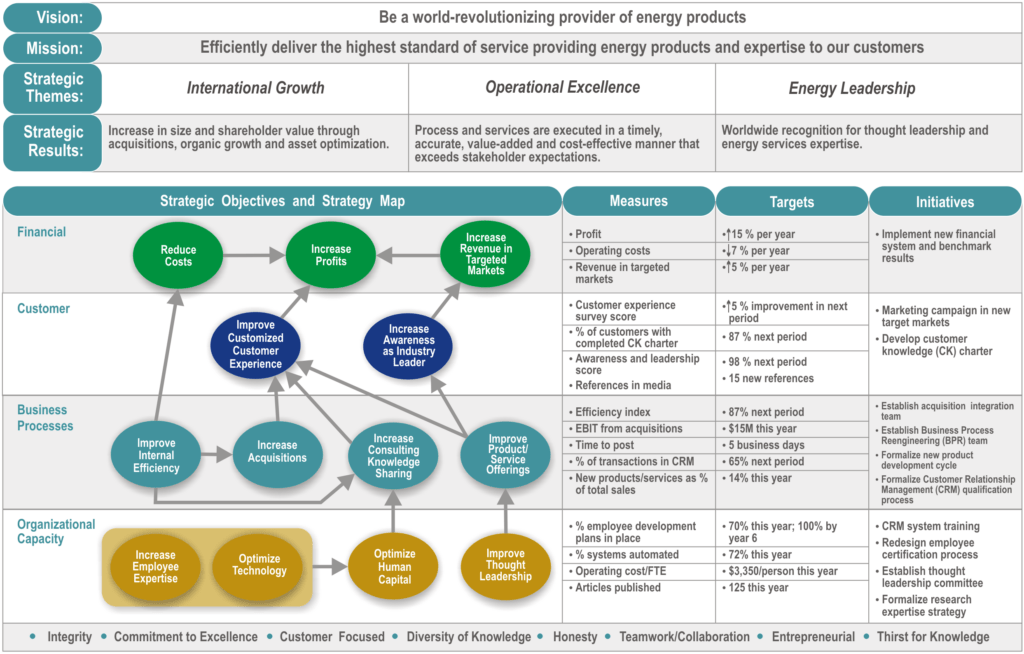
7: Performance Analysis
With KPIs in place, we establish a system for monitoring, reporting, and analyzing performance data to track progress and adjust strategies as needed..
8: Alignment
To ensure organization-wide alignment, we cascade the Balanced Scorecard from top-level strategy to departments, teams, and individuals, fostering accountability at all levels. Cascading communicates how organization level strategy (Tier 1) is supported by department/unit strategy (Tier 2), and then ultimately how employees or teams (Tier 3) contributes to the strategy with specific actions, projects and tasks.

9: Evaluation
Sustaining success requires ongoing engagement and strategic evaluation. We integrate the Balanced Scorecard into daily operations, budgeting, and governance, making strategy execution a continuous process.
Get Started with the Nine Steps to Success™
The Balanced Scorecard Institute has helped thousands of organizations worldwide implement this framework successfully. Whether you’re just starting or refining an existing strategy, we provide:
✅ Expert-led training & workshops
✅ Hands-on consulting support
✅ Customized implementation plans
Ready to drive real results? Check out our Balanced Scorecard Professional Certification Program to learn more about the Nine Step methodology or Contact Us to learn how this framework can transform your organization!
Contact us to find out how we can help you take your strategy to the next level!

